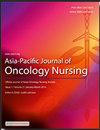Barriers to implementation of preoperative urostomy site marking in nurse-physician cooperation: A qualitative study based on the Theoretical Domains Framework
IF 2.8
3区 医学
Q1 NURSING
引用次数: 0
Abstract
Objective
This study aimed to understand the barriers to nurse-physician collaboration in implementing preoperative stoma site marking using qualitative research methods following Theoretical Domain Framework.
Methods
A qualitative descriptive study using semi-structured interviews was conducted from March to June 2023 in the urology departments of nine tertiary hospitals in China. Twelve urologists and eight enterostomal therapists (ETs) were recruited using purposive sampling. Audio recordings were transcribed verbatim and data were analyzed using content analysis.
Results
Five themes were identified in the study: shortage of manpower and stoma care products, lack of standard and regulations, lack of motivation and intention, inconsistency of expectation on consequences, and difficulties in cooperation.
Conclusion
This study indicated that the barriers to implementation of preoperative urostomy localization among urologists and ETs. Institutions, resources, clear career plans, and performance feedback can increase motivation and intention. In addition, the lack of cooperation between urologists and ETs is a key factor for poor urostomy localization implementation, which calls for effective and equal communication between doctors and nurses.
在护士-医生合作中实施术前尿造口部位标记的障碍:基于理论领域框架的定性研究
目的本研究旨在了解护士-医生合作实施术前造口部位标记的障碍,采用定性研究方法,遵循理论领域框架。方法采用半结构化访谈法,于2023年3月至6月对全国9家三级医院泌尿外科进行定性描述性研究。采用目的抽样方法招募了12名泌尿科医生和8名肠造口治疗师。录音记录逐字转录,数据分析采用内容分析。结果研究确定了五个主题:人力和口腔护理产品短缺、缺乏标准和法规、缺乏动机和意图、对后果的期望不一致、合作困难。结论本研究提示了泌尿科医师和ETs在实施术前造口定位时存在的障碍。制度、资源、清晰的职业规划和绩效反馈都能提高工作积极性和积极性。此外,泌尿科医师与ETs之间缺乏合作是导致泌尿造口定位实施不佳的关键因素,这需要医生与护士之间进行有效、平等的沟通。
本文章由计算机程序翻译,如有差异,请以英文原文为准。
求助全文
约1分钟内获得全文
求助全文
来源期刊

Asia-Pacific Journal of Oncology Nursing
Multiple-
CiteScore
2.80
自引率
11.10%
发文量
136
审稿时长
31 days
 求助内容:
求助内容: 应助结果提醒方式:
应助结果提醒方式:


